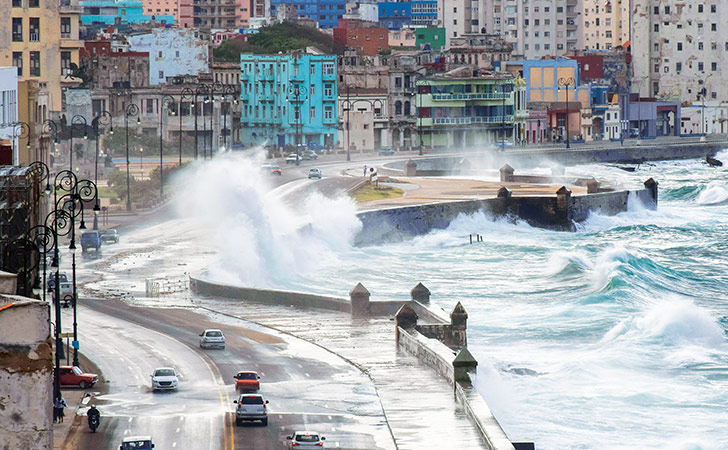Managing climate and natural disaster risk
Losses from floods, storms, earthquakes, wildfires and other natural disasters can have a dramatic impact on the citizens and economies of entire countries. Insurance helps people, businesses and societies get back on their feet after disaster strikes.
In 2017, the hurricanes in the Caribbean and the US, the typhoons in Australia and Asia, winter storms and flooding in Europe, wildfires in California and Europe, and two earthquakes in Mexico proved the point again. Total economic losses from natural and man-made catastrophes were more than USD 337 billion for the full year. Insurance payouts helped many to restore their lives, but even more were left with nothing once they could return to what was their home. This shows that there remains a large need to reduce the negative effects of natural disasters – let alone to assure the funds needed to rebuild affected communities after an event.
In the future, these negative effects will become even more severe. We expect extreme weather events like hurricanes and floods to increase as a result of climate change. Moreover, higher concentrations of assets in exposed areas will also result in higher losses, in particular in the world’s rapidly growing cities.
By financing measures to mitigate disaster risks and adapt to climate change, we can strengthen the resilience of citizens, businesses, local and national economies and societies. As insurance puts a price tag on risk, it helps create incentives to invest in prevention measures.
Understanding natural catastrophe risks and how they develop is critical to cost our business accurately and to structure sound risk transfer solutions. By sharing this knowledge, we can help our partners to identify cost-effective protection measures. In addition, we provide solutions to cover the residual risk that cannot be avoided.

Storm surges are a key source of destruction unleashed by tropical cyclones, yet information on this risk has been limited so far. Our Global Storm Surge Zones tool closes this gap, helping our clients address the storm surge risks they may face.
Our notable achievements in 2017:
- Storm surges triggered by tropical cyclones are a main force of destruction. In 2017, we released our Global Storm Surge Zones, the industry’s first service that helps stakeholders plan for these events. It is accessible via our CatNet® tool at www.swissre.com/catnet;
- Our Economics of Climate Adaption (ECA) studies help decision makers determine cost-effective measures that protect their communities against climate risks. In 2017, we launched a partner publication on the ECA study we had carried out for the city of Barisal in Bangladesh. For residual risk we developed rainX, an index insurance tool covering heavy or lack of rain (see Launching our rainX tool);
- Through the Swiss Re Institute, we held our 2017 sigma event on “Catastrophes – Protecting the uninsured. Solutions for a resilient world” (see The Swiss Re Institute). It focused on what the re/insurance industry can do to help close the protection gap by creating solutions tailored to customers’ needs.